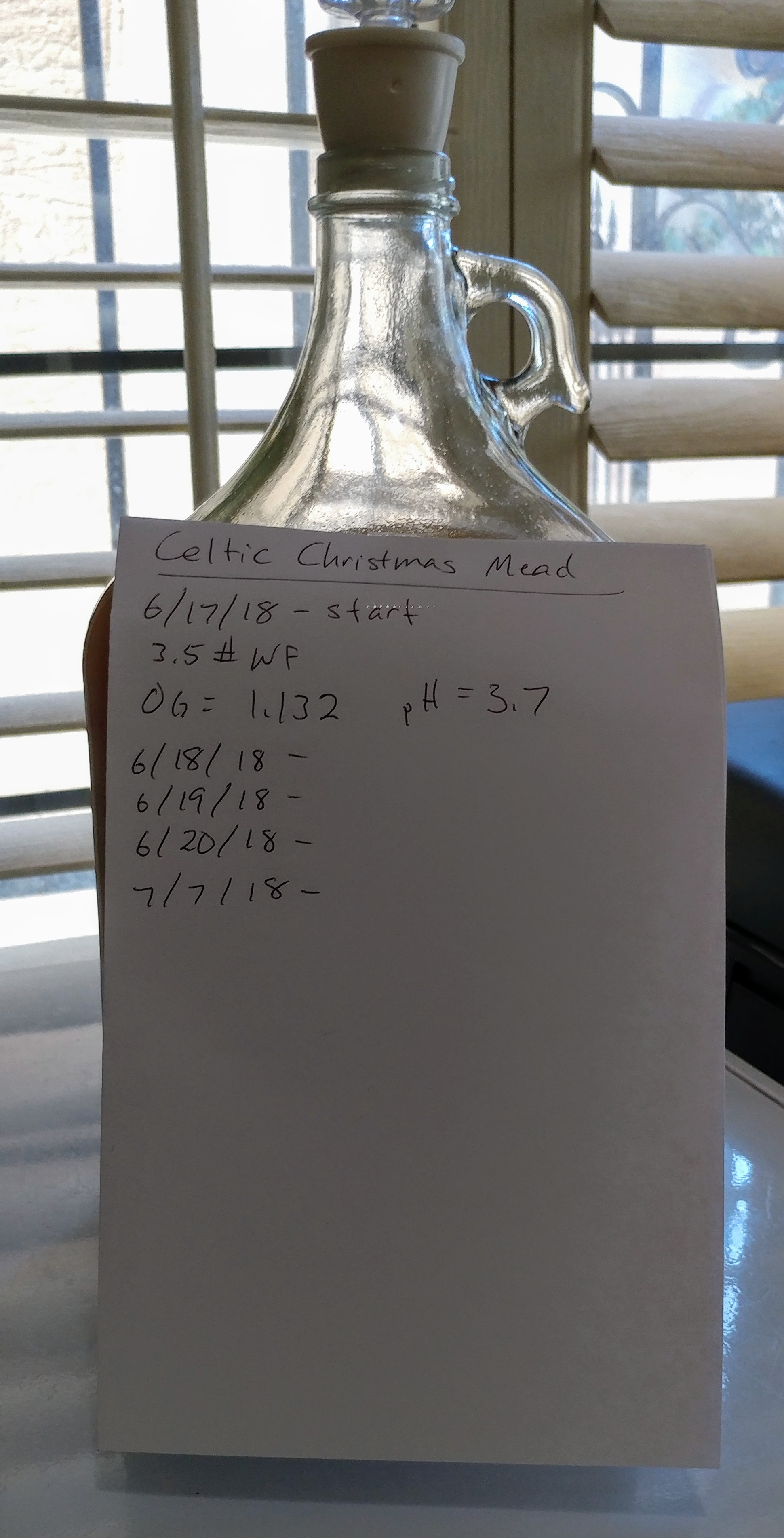The importance of keeping a log
06/17/2018
When I first starting making beer years ago, I never bothered keeping a log of what I was making nor the progress. I would go down to the local brew store and pick up a recipe and the ingredients making a single 5-gallon batch. I would write on the recipe the original gravity but wouldn’t note anything else leaving to memory for the final details. And this method work for the beers I was making and didn’t have too many problems with my beers.

But, there were problems.
I started making beer with a Mr. Beer my kids got me for Father’s Day and it taught me some bad habits. Mr. Beer doesn’t have a secondary fermentation most likely because it would mean additional equipment they didn’t want to sell. Second, I think they rely on the heavy yeast still in the primary for creating the carbonation when you bottle the beer. And, when I “graduated” out of my Mr. Beer, I took these lessons along with me into the 5-gallon batches I would make.
Don’t get me wrong; the beer that I made was drinkable and even enjoyable despite the slightly inferior quality. I would be cloudy when I was chilled and there was always a little at the bottom that you didn’t want to drink. The remaining yeast that carbonated the beer would settle to the bottom of the bottle giving a yeasty taste to the final mouthful of beer. Some people didn’t mind it but I still wouldn’t drink it.
When I decided to start brewing mead, I discovered that the timeline was much longer often lasting months instead of a few weeks for beer. I also found that a clear product was important to the presentation and cloudiness or sediment in the bottle wasn’t acceptable. A secondary fermentation was not just recommended but necessary for a decent product. And, instead of a few weeks for the aging process several months were needed instead. I needed to keep track of what I was doing over this longer timescale.
To add to the confusion, I decided that after my first batch of mead was finished and aging, I was going to start my next batch. I also decided by my third batch that I would start a new mead every other week when we went shopping. I found a source of one-gallon glass jugs from fresh apple juice that worked wonderfully for making mead. And with up to seven batches of mead all working at the same time not counting the ones aging in the bottles, I needed a way to track what each was doing.
I decided on a method of taking a half sheet of paper and writing what type of mead I was going to make. This paper would be taped to the side of the glass carboy/jug and follow the batch through the entire process until bottling. Under the name I would put the date I was starting the mead and how much and type of honey used. I was opting for a method where flavoring was added to the secondary so it was important what I would be adding in four weeks.
Also, important and often forgotten, I place the original gravity and, after I got a pH meter, the pH of the mead. The first is important to find out the ABV of the mead when it’s bottled as well to check that fermentation is finished. At each step of the process, I mark the date and what is done including the gravity at each stage. I’ll be checking to make sure the gravity is at a set level and adjust the sweetness of the mead at each stage.
In my logs, I also write down the estimated date for the next stage that will need my attention so I don’t forget. Mead takes time to condition and become the mead that you want and rushing the process will not make it age faster. I usually aim for four weeks in the primary and secondary before moving to the clarifier. I then wait three weeks and check for clarification and add Bentonite if needed for stubborn mead. Give it one more week to clear before syphoning off the Bentonite and then let it rest for two more weeks before bottling.
Aging is the tough one. By this time, the log if finished and it place it in a file for future reference. The final entry on the log is the date it was bottled and the final gravity as well as the ABV. I put both these numbers on the bottle so I can have a better what I’m serving when I open the bottle. I try to let my meads age six months from when they started and put the start month and year on the label. Most are ready at the six-month mark but my Cyser needed almost a full year before it was smooth for my tastes. I keep a 500 ml bottle set aside just for my testing.
When you’re making seven different meads over six months, you can see how confusing it can become. Not having a way to keep track of each batch can easily add to the confusion possibly ruining one or more batches. Moving the log from carboy to carboy helps you know exactly what is happening in each of the jugs. And, as changes happen, and they will, you will find it easier to know what adjustments were made without wondering what jug it was made in.

Finally, keeping and reviewing logs help you learn from past mistakes when you decide to go back and try a recipe in the future. Develop a method that works best for you that keeps you focused on what you want from the batch you’re making. When done, evaluate it in the log file what was good, what was bad, and things you want to do differently next time. This is how we become better at our craft as we try new things and experiment as we progress in this hobby.
Have fun and drink safely.
